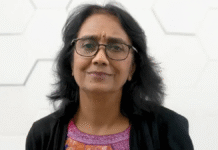In the course of the last few decades infectious diseases have grown to become a major global health issue. Initiatives to eradicate vector-borne killer diseases such as dengue and malaria still continue to be a daunting task while resurgent tropical diseases such as Zika continue to be a worldwide menace. The race to find vaccines to eradicate these diseases and others such as the hand, foot and mouth disease (HFMD) is a key and urgent agenda of the pharmaceutical industry. A Malaysian start-up, Sentinext Therapeutics Sdn Bhd, has also joined the race to develop vaccines that can save lives. Far from being a plain Jane, Sentinext’s Chief Scientific Officer, Dr Jane Cardosa (pix), shares her thoughts.
Q:TELL us about Sentinext and its beginning. You were a professor at a public university. How and what made you made you establish this start up?
A: I reached mandatory retirement age (it was 56 years at the time) and obtained a two-year re-employment contract. It is impossible to maintain an active academic research lab in my field without some certainty of continued employment (due to having to source research grants) and so I decided not to stay on at the university.
This was a time when the national biotech policy was being developed and I decided that it was time to support the development of biotechnology in the vaccine development start-up space.
Q: Vaccines and drug development is completely a different ball game in the biotech industry. It has a long gestation period, requires high investment, is highly risky and is also highly regulated. How are you tackling this in Malaysia, a country new to all these issues?
A: The approach Sentinext took was to apply the standards and practices of more advanced regulatory environments such as in Europe and the USA.
We sought consultants, scientific advisors and directors with vast experience in the vaccine development space in order to learn from them and to develop the expertise in-house ultimately. Sentinext was highly successful not only in developing upstream but also downstream processes for our engineered vaccine and we successfully produced with the help of a contract manufacturing organisation in Europe,
GMP standard clinical material for the First-in-Human clinical trial which has been carried out in Australia. We are currently awaiting the final results of this trial.
Q: Your focus has been HFMD and this disease was in the headlines recently in Malaysia. Give us the statistics for this disease in Malaysia, how big is it a problem for us? Why did you choose to work on HFMD and not a tropical disease like dengue?
A: HFMD is a clinical syndrome which is caused by many different enteroviruses. However, one of these viruses, EV71 can cause infection of the central nervous system, and thus can lead to severe disease condition and fatalities in young children. There is no treatment available. This virus causes outbreaks and can be controlled by vaccination if a safe and effective vaccine exists.
I have always been interested in infections that affect the central nervous system because of the terrible outcomes and long-lasting effects of these infections and so this is why an EV71 vaccine was one of the products I sought to develop.
I have also always been interested in the mosquito-borne viruses such as dengue and Japanese encephalitis. In fact, I had already, in collaboration with a biotech company in Europe, developed a vaccine for Japanese encephalitis and we sought funding to license this to Sentinext but were denied funding.
We were also denied funding for the development of a dengue vaccine. I am currently advising a biotech in the USA on the development of a novel dengue vaccine since I have totally failed over the years to obtain local support for the development of a dengue vaccine.
Q: What is the current status of the vaccine now?
Our EV71 Virus-Like-Particle (VLP) vaccine has been successfully tested in a preclinical toxicology study by a specialist company in the UK and this study showed that this vaccine is safe and immunogenic in animals and this result provided support to next text it for safety in humans. This First-in-Human study has been completed in Australia and we are now awaiting the final report.
Q: Who else in the world is sharing the same space as Sentinext in this fight against HFMD?
There are a number of companies in China heavily supported by the Chinese government, who have developed EV71 vaccines based on old technology. This approach has also been taken by Taiwan and Singapore.
Q: When will your vaccine hit the market?
A: It is years and millions of ringgits away. After the phase 1 safety study, we have to find the money to manufacture more vaccine for further safety studies and ultimately to do what is called an efficacy study – which will require vaccinating thousands of subjects and then figuring out if the vaccine is able to protect against infection.
Q: What were the challenges you faced in establishing Sentinext?
A: The main challenge is funding.
Q: What are the usual challenges a start up in medical biotechnology faces in Malaysia
A: Funding, skilled technical staff and investors who can understand the space.
Q: MTDC is your incubator. How does this help Sentinext?
MTDC has been most supportive in many ways, including funding and moral support. But the fact is that vaccine development requires more resources and money than seems to be available locally.

















